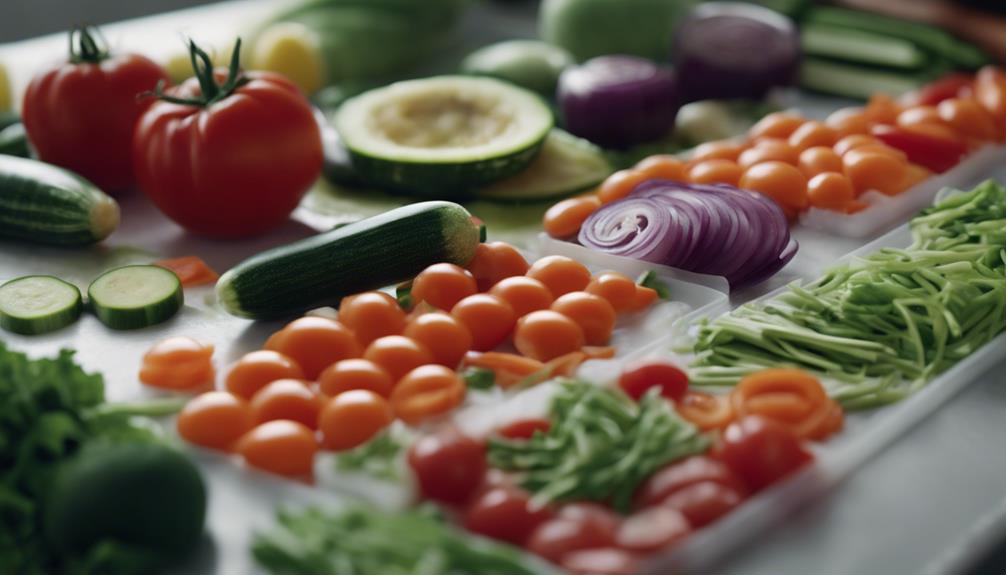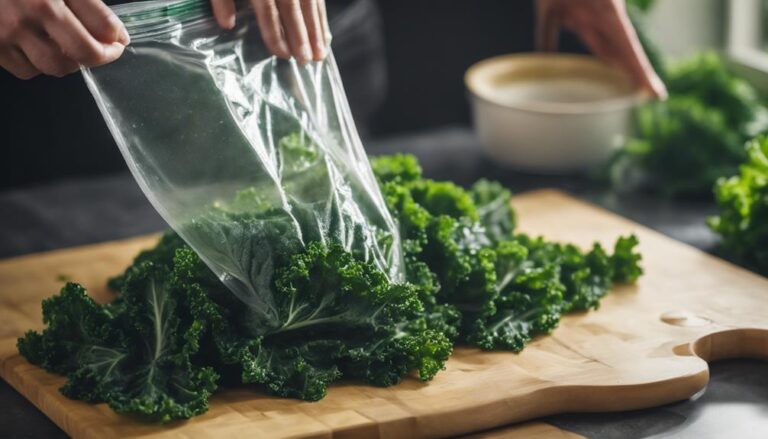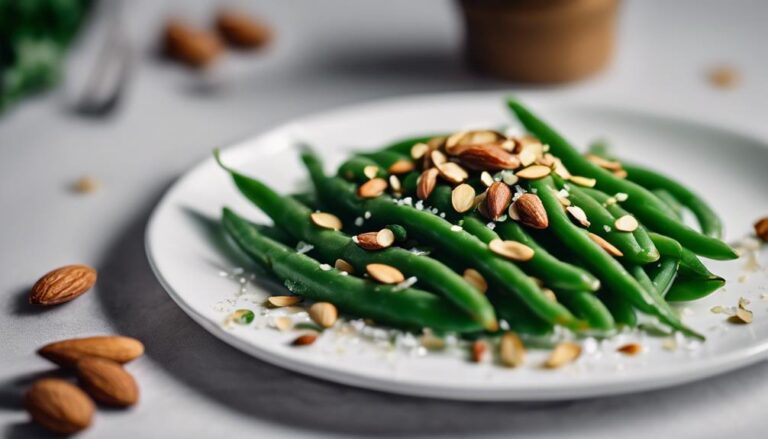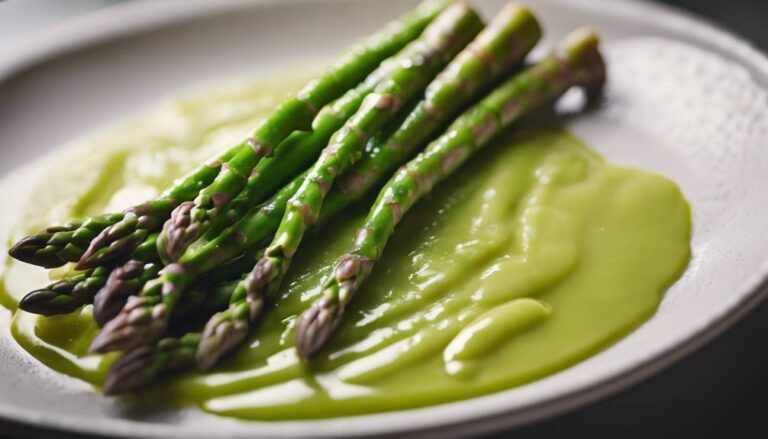Sous Vide Minestrone With Seasonal Vegetables
Elevate your Minestrone by using sous vide to spotlight seasonal vegetables' essence with precise flavors and textures. Maximize nutrients preservation and achieve perfectly cooked veggies with vibrant colors. This method infuses flavors, maintains texture, and offers a delightful mouthfeel.
What You Will Learn Here
- Sous vide method preserves seasonal vegetable flavors and nutrients.
- Precise cooking control ensures perfectly cooked vegetables.
- Retains vibrant colors and essential nutrients for a nutritious dish.
- Infuses flavors while maintaining vegetable texture for a delightful mouthfeel.
- Enhances Minestrone's depth with layers of complex seasonal vegetables.
Origin of Minestrone Soup

Minestrone soup has a rich history rooted in Italian cucina povera, showcasing a blend of humble, seasonal ingredients. Its evolution from ancient Roman and 16th-century kitchens highlights the adaptability and versatility of this hearty dish.
Cultural variations of minestrone reflect diverse ingredient choices and regional influences, making it a customizable and creative staple in Italian cuisine.
Minestrone Soup History
Having origins in ancient Roman and 16th-century Italian kitchens, the history of Minestrone soup is deeply rooted in the cucina povera tradition, focusing on simple, seasonal ingredients. This vegetable soup has evolved over centuries, embodying a philosophy of using what's available to create a comforting and nutritious dish.
Minestrone's adaptability allows for a myriad of variations, making it a versatile canvas for culinary experimentation. The soup's foundation typically includes beans, onions, carrots, and tomatoes, providing a robust flavor profile. Its history showcases a culinary journey where resourcefulness and creativity intersect, resulting in a beloved dish that continues to inspire modern interpretations.
Minestrone's humble beginnings highlight the beauty of utilizing seasonal vegetables to craft a hearty and flavorful soup experience.
Traditional Minestrone Ingredients
Rooted in Italian culinary history, the traditional ingredients of this hearty vegetable soup encompass a blend of beans, onions, celery, carrots, and tomatoes. These vegetables form the base of minestrone, providing a rich and robust flavor profile.
Additionally, seasonal vegetables such as zucchini, spinach, and kale can be incorporated to enhance freshness and nutritional value. The use of these ingredients highlights the essence of minestrone as a traditional dish that celebrates simplicity and versatility.
Cultural Variations of Minestrone
Italian culinary variations of minestrone soup showcase a diverse range of regional adaptations, reflecting the rich tapestry of flavors and ingredients found across different parts of Italy.
In Italy, the vegetables used in minestrone vary depending on the region; for example, in northern Italy, minestrone might include cabbage and borlotti beans, while in southern Italy, it could feature zucchini and eggplant.
The Italian approach to minestrone emphasizes fresh, seasonal vegetables, allowing for a dynamic and ever-changing flavor profile. This flexibility in ingredients has made minestrone a versatile dish, adaptable to local harvests and culinary preferences.
Key Minestrone Ingredients

When preparing a traditional minestrone soup, it's essential to include key ingredients such as beans, onions, celery, carrots, and tomatoes. These ingredients form the base of this hearty Italian soup, providing a rich and flavorful foundation for a satisfying meal.
To enhance the taste and texture of your minestrone, consider the following:
- Beans: Whether you opt for classic cannellini beans or prefer kidney beans for a twist, legumes add protein and substance to the soup.
- Onions: Onions bring a savory sweetness to the dish, creating depth of flavor that complements the other vegetables.
- Celery: The subtle bitterness of celery adds a revitalizing note to the minestrone, balancing out the richness of the broth.
- Carrots: Carrots not only contribute sweetness but also provide a pop of color to the soup, making it visually appealing and appetizing.
Tasty Vegetable Minestrone Varieties
When exploring tasty vegetable minestrone varieties, consider the Parmesan Zucchini Minestrone Recipe for a cheesy twist.
The Chunky Potato Minestrone Recipe offers a hearty option with a comforting potato base.
For a protein-packed choice, the Hearty Lentil Minestrone Recipe is a satisfying variation to try.
Parmesan Zucchini Minestrone Recipe
To enhance the classic minestrone soup with a delightful twist, consider preparing a Parmesan Zucchini Minestrone featuring a medley of seasonal vegetables. This variation of the traditional soup offers a unique blend of flavors and textures that will elevate your dining experience.
Here are some key points to note about this innovative Parmesan Zucchini Minestrone recipe:
- Freshness: Incorporates zucchini for a fresh and light taste in the minestrone.
- Richness: The addition of Parmesan cheese adds a rich and savory depth of flavor to the soup.
- Versatility: Zucchini is a versatile vegetable that complements the other ingredients in the soup.
- Nutritious Twist: Provides a delicious and nutritious way to enjoy a hearty bowl of minestrone with a twist.
Chunky Potato Minestrone Recipe
For a hearty and satisfying twist on the classic minestrone soup, consider delving into the Chunky Potato Minestrone recipe, showcasing the comforting essence of potatoes intertwined with seasonal vegetables.
- Potatoes as a Key Ingredient: The Chunky Potato Minestrone features potatoes, adding a hearty and filling component to the dish.
- Seasonal Vegetable Combination: The recipe combines seasonal vegetables with potatoes, creating a rich and flavorful broth that captures the essence of the season.
- Versatile Adaptability: This minestrone is versatile, allowing for adaptations based on personal preferences and ingredient availability.
- Warm and Nourishing: Chunky Potato Minestrone is a perfect choice for colder days, providing a warm and nourishing meal that satisfies with every spoonful.
Hearty Lentil Minestrone Recipe
Incorporating lentils into your minestrone soup can enhance its nutritional value and add a hearty texture to the dish. Here's why lentil minestrone stands out:
- Nutritious Variation: Lentil minestrone is a hearty and nutritious twist on the classic soup, providing a good source of protein and fiber.
- Complementary Vegetables: Seasonal vegetables like carrots, celery, and tomatoes complement the lentils well, enhancing the flavor profile.
- Sous Vide Perfection: Cooking lentils sous vide guarantees they're tender and flavorful, adding a depth of taste to the minestrone.
- Versatile Customization: This recipe is versatile, allowing you to customize it with your favorite vegetables and seasonings for a personalized touch.
Try this innovative blend of lentils and seasonal vegetables for a delicious and wholesome minestrone experience.
Enhancing Minestrone Soup Flavor
To enhance the flavor of your minestrone soup, consider experimenting with flavorful vegetable combinations, such as adding a Parmesan rind for umami depth.
Seasoning the soup with aromatics like onion, garlic, and tomato paste can create a rich and savory base.
Balancing these savory elements with the freshness and variety of seasonal vegetables will help elevate the overall taste profile of your minestrone.
Flavorful Vegetable Combinations
When crafting a flavorful vegetable combination for your sous vide minestrone, consider the impact of incorporating a variety of seasonal produce to elevate the soup's overall taste profile. To create a well-balanced and richly flavored minestrone, you can combine traditional base vegetables like onions, carrots, celery, and tomatoes with seasonal additions such as zucchini, green beans, and spinach. These vegetables are tender and when cooked sous vide, they retain their natural textures and flavors. Enhance this mix with fresh herbs like basil, parsley, or rosemary to add layers of herbaceous aroma and taste. By utilizing this diverse array of ingredients, you can achieve a vibrant and satisfying minestrone soup that celebrates the essence of seasonal produce.
| Seasonal Vegetables | Fresh Herbs |
|---|---|
| Zucchini | Basil |
| Green Beans | Parsley |
| Spinach | Rosemary |
Seasoning for Depth
For enhanced depth of flavor in your minestrone soup, consider infusing it with a Parmesan rind during the cooking process. The Parmesan rind adds a rich umami taste, elevating the overall savory profile of the dish. When simmered with the soup, it releases a deep, nutty essence that enhances the complexity of flavors.
Additionally, garlic cloves can be a powerful seasoning agent to further enrich the taste of the minestrone. The pungent aroma and robust flavor of garlic complement the other ingredients, creating a harmonious blend of tastes.
Balancing Savory Elements
Enhancing the flavor of your minestrone soup involves skillfully balancing the savory elements present, ensuring a harmonious blend of aromatics, vegetables, and herbs. The savory components, such as onions, carrots, and celery, form the flavor base of the soup.
To deepen the umami profile, consider adding Parmesan rind while tomatoes, whether fresh or canned, further enrich the savory notes. Seasonal vegetables like zucchini, green beans, and spinach not only contribute to the nutritional value but also enhance the overall richness of the soup.
Incorporating fresh herbs like basil and parsley can provide a final layer of savory complexity. By carefully balancing these elements, you can create a minestrone soup with a robust and well-rounded flavor profile, perfect for any season.
Final Thoughts
In conclusion, the sous vide method enhances the minestrone soup by preserving the flavors and nutrients of seasonal vegetables with precise cooking control. Sous vide cooking provides a consistent and efficient way to guarantee that the vegetables in the minestrone are cooked to perfection every time. By vacuum-sealing the ingredients and cooking them in a water bath at precisely controlled temperatures, sous vide retains the vibrant colors and essential nutrients of the seasonal vegetables, resulting in a visually appealing and nutritious dish.
Furthermore, the sous vide method allows for the infusion of flavors, as the vegetables cook in their own juices, enhancing the overall taste profile of the minestrone. This technique also ensures that the vegetables maintain their texture and don't become mushy, providing a delightful mouthfeel in every spoonful of soup.
Frequently Asked Questions
What Vegetables Can You Sous Vide Together?
You can sous vide pairings with similar textures like carrots, potatoes, and beets together. Consider adding leafy greens like spinach and kale towards the end to prevent overcooking. Mix harder vegetables such as broccoli with root veggies for balanced textures.
What Is the Best Temperature for Sous Vide Vegetables?
For ideal sous vide doneness and vegetable texture, set the temperature at 183°F/84°C. This precise heat level breaks down cell walls gently over 1-2 hours, ensuring a tender texture without compromising nutrients. Enjoy flavorful, evenly cooked vegetables every time.
Is It Worth It to Sous Vide Vegetables?
Sous vide vegetables offer enhanced nutrients, texture, and flavor. They excel in precision cooking, retaining juices, and vibrant colors. Though time-consuming and needing equipment, the benefits like even cooking and taste superiority over traditional methods make sous vide worthwhile.
What Is the Thickening Agent for Minestrone?
To thicken minestrone, consider using a roux, cornstarch, sous vide techniques, or traditional thickening methods. Roux, a mixture of butter and flour, provides a rich base. Cornstarch can be a gluten-free alternative. Experiment with sous vide for innovative results.
Conclusion
To sum up, preparing sous vide minestrone with seasonal vegetables allows for precise temperature control, ensuring vegetables are cooked to perfection while retaining their nutrients and flavors.
By incorporating key ingredients like beans, tomatoes, and pasta, this classic soup becomes a versatile dish that can be customized with a variety of seasonal vegetables.
Experimenting with different herbs, spices, and garnishes can elevate the flavor profile of this traditional Italian soup, making it a delicious and satisfying meal option.











